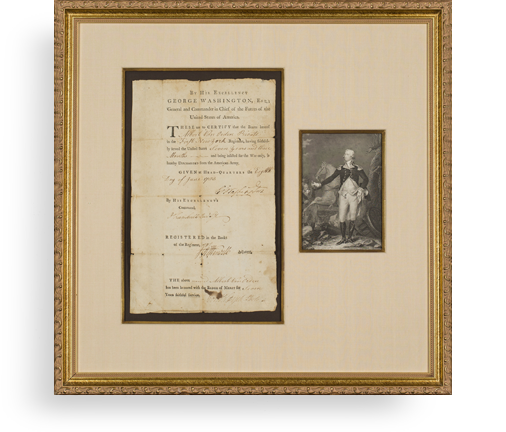Robert Morris Juggles Funds For His Purchase of the Genessee Lands
Financier of the Revolution, Morris served as a U.S. Senator from Pennsylvania from 1789 to 1795. As Senator, he generally supported the Federalists and backed Hamilton’s economic proposals. Hamilton’s proposals were, in actuality, a rework of Morris’s report "On Public Credit", submitted some 10 years earlier. Morris is credited with helping to...
Financier of the Revolution, Morris served as a U.S. Senator from Pennsylvania from 1789 to 1795. As Senator, he generally supported the Federalists and backed Hamilton’s economic proposals. Hamilton’s proposals were, in actuality, a rework of Morris’s report "On Public Credit", submitted some 10 years earlier. Morris is credited with helping to bring the Federal Government to Philadelphia for 10 years as the Federal District was under construction. During this period he moved from his home and allowed it to be used by Washington as his residence.
During his time in the Senate, Morris began purchasing western lands for speculation, and in 1791 he bought much of what is now western New York from its then owner, Massachusetts. He borrowed heavily to finance it, and soon began having financial problems.
Letter Signed, Philadelphia, March 13, 1792, to James Carey, who had lent him money to use as security in that land acquisition, authorizing Carey to sell some of Morris’ land in Baltimore, probably in lieu of receiving a cash payment on the debt. "I am favored with yours of the 4th instant and I really am anxious to do something with my land near Baltimore which I am sure is daily suffering and I would willingly dispose of it for five pounds an acre ready money at 5 pounds 10 shillings, part cash part credit. I beg leave to trouble you with the enclosed copy of a letter from a Mr. Robert Long [asking if his Baltimore land was for sale]. If you can make any agreement with the person he mentions, or any other on the above or better terms I authorize you to make the sale which I will confirm. Mr. Vanbibber has been lucky indeed to get payment of his debt from Mr. Braxton and I wish I was as well clear of him." He adds a holograph P.S. – "Pray deliver the enclosed to Mr. Long whom I refer to you for my terms. If credit is wanted for the purchase money undoubted security must be given and interest to be paid annually." Carter Braxton, signer of the Declaration of Independence, had financial dealings with Morris. The two ended up in litigation, and here Morris expresses his distaste for him.
Morris sold much of his New York land in December 1792. His financial problems only worsened, however, and in a few years he would be insolvent. The enclosed letter from Long is included.

Frame, Display, Preserve
Each frame is custom constructed, using only proper museum archival materials. This includes:The finest frames, tailored to match the document you have chosen. These can period style, antiqued, gilded, wood, etc. Fabric mats, including silk and satin, as well as museum mat board with hand painted bevels. Attachment of the document to the matting to ensure its protection. This "hinging" is done according to archival standards. Protective "glass," or Tru Vue Optium Acrylic glazing, which is shatter resistant, 99% UV protective, and anti-reflective. You benefit from our decades of experience in designing and creating beautiful, compelling, and protective framed historical documents.
Learn more about our Framing Services








































































































